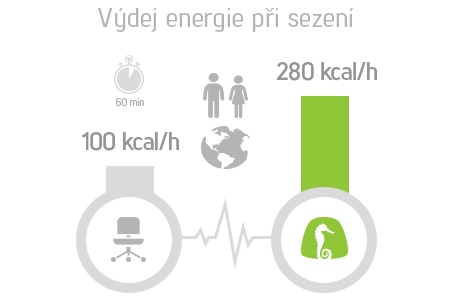How does Dvectis focused on the human body?
Back, neck and spine relief.
Dvectis activated dynamic sitting has a positive effect not only on spine, but also on the functional defects of the musculoskeletal system
read moreFunctional disorders of the musculoskeletal system are functional disorders without structural changes. The balance between the muscle and joint systems and their neural regulation ensures correct function of the musculoskeletal system. Proper function is achieved by a tuned interplay of these structures. The ideal state can be very easily influenced by various stimuli from within or outside of the body. Our today's poor sedentary lifestyle, improper diet, and stress very often lead to formation of functional disorders. Unfortunately, these disorders increasingly affect not only adults but also children. It is important to realize that long-term misalignment of our musculoskeletal functions leads to damage to the structure. The function is a crucial factor for the emergence and pain formation.
Functional disorders occur at three levels
read more1. Central regulation function
- From birth, each person creates their exercise habits and stereotypes. They form a system of conditioned and unconditioned reflexes that arise on the basis of recurring stimuli and impulses. The basic motion stereotypes, called postural stereotypes, include lying, sitting, standing, and posture. The locomotion stereotypes are, among others, walking, running, manual activities, and breathing. Motion stereotypes can be divided into first and second order stereotypes. First order stereotypes are determined genetically, that is automatically, and constitute the fundamental matrix, which is roughly the same in all individuals. Second order stereotypes are formed by individual development of functional connections. It is important to understand how stereotypes develop, fixate, and change. Erroneous motion stereotypes are most often a result of a failure of the central control, resulting in impaired muscle coordination. Erroneous stereotypes are not permanent, they can be altered as a result of internal changes in the body or changes in the external environment. Fixated wrong stereotypes are hard to remove, with the success rate getting even lower with higher age.
2. Muscle function
- In order to achieve the most effective movement, muscle strenght, and proper and fast use of muscles during motion while putting even load on joints, it is essential to ensure balance of muscle tension among muscles on opposite sides of the joint, called antagonists. If there are either external or internal influences that lead to adaptation changes inside the organism, the muscles with a tendency to weaken (dynamic muscles) get weaker and postural muscles, which tend to shorten, become shorter. This creates muscular imbalance. If such malfunction in muscle tensions is not cured, it will eventually lead to a vicious cycle. On one side, the shortened muscles will pull the motion segment more and more to its side, while the muscles on the other side will become even weaker. Muscle imbalance can be imagined as a swinging door which is held in place by two springs. If the door is to move freely from side to side, the two springs must be in balance. Otherwise, the shortened spring pulls the door to its side. The cause of muscle imbalance is inappropriate functional load, which can be either insufficient or one-sided. One-sided load may be dynamic or static. Dynamic one-sided load mostly affects athletes. Therefore, it is of great importance to think about balance in straining certain muscle groups when doing sports.
3. Joint function
- Each joint has to have a certain range of movement and direction. All joints are in harmony with the muscles, and they affect each other. In case of injuries, inflammation, or degenerative diseases, joints became limited in the range of their motion. This results in blocks and pain. In functional disorders of the joints, it is necessary to reduce joint hypermobility, which is an increased range of normal movement in the joint. It can be local – caused by exercising (gymnastics) – or general, which is characterized by an overall increase in flexibility (laxity) of solid tissues, such as joint capsules and ligaments.
- In general hypermobility, it is necessary to re-strengthen the muscle corset as hypermobility causes functional disorders of the joints and muscles.
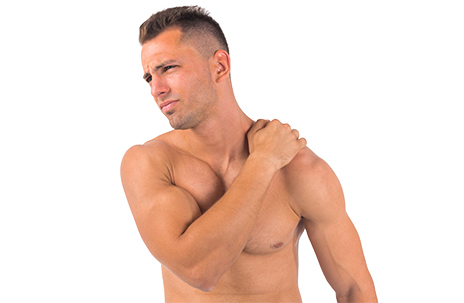
Back pain is everyday challenge for most of us. Up to 80% of U.S. population experiences a back problem. It is one of the most common reasons for missed work and the second most common reason people go to a doctor.
Back pain, having its origin in the spine, is globally recognized as one of the most serious health, economic, and social problems.
read moreNearly 85% of the world's population experience this type of pain during their lives. According to data from the U.S., it was found back pain is the number one cause of incapacity among people under 45, while being the second most common reason for visiting the doctor. Back pain is also the fifth most common reason for hospitalization and the fourth leading cause of surgical procedures. The annual cost of the treatment and incapacity of these patients amount to fifty billion dollars. This statistical data strongly urges us to give a serious thought about the causes, treatment possibilities, and prevention of back pain and to review the whole series of current diagnostic and therapeutic procedures.
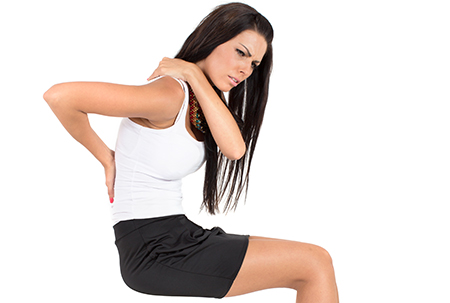
Sedentary lifestyle and a lack of movement prevent us from being fit.
If we think about the causes, diagnostics, and latest findings regarding the treatment of back pain, we necessarily come to the conclusion that the most sensible approach is to view it as a fact and occasional, though very unpleasant, part of everyday lif
read more- Back pain is not exclusively a medical issue, it is rather a complex set of biological, psychological, and social factors, primarily dominated by the psychological aspects. In diagnostics, excluding several serious and basically exceptional conditions, the search for determining the exact causes of back pain – for the price of expensive and often cumbersome medical examination – is in most cases completely unnecessary.
- An encouraging finding is that the majority of patients suffering from back pain heal as quickly as those who are not treated at all. The best medical approach is thus to stay patient and avoid insensitive treatment interventions that disturb the spontaneous and totally natural process of healing. The best advice the doctor can give acute patients is to try to endure the difficulties and pain for a few days. Such consultation should naturally include familiarizing the patient with the causes of their difficulties and stressing the favorable prognosis leading to relief. In order to relieve pain faster, it is very often much more effective if the patient remains in good shape and stays, if their condition allows, reasonably active. For the prevention and treatment of back pain, it is essential to adjust the lifestyle, including both psychosocial and physical components. In fact, lifestyle changes are in most cases – not only in the functional etiology – a causal treatment. For the vast majority of back pain patients, we have been finding out with relentless regularity that lack of movement and stereotype movement cause overweight and muscle imbalance.
- A proper lifestyle and targeted therapeutic exercise, including proper sitting, have then proved to be invaluable aids in the prevention and treatment of both acute and chronic vertebral problems. A countless number of clinical trials regarding physical modes and back pain have clearly shown that exercise programs significantly reduce the risk of recurrence and prevent the transition of the disease into chronicity. Prevention of back pain and other lifestyle diseases may be positively influenced by even a seemingly insignificant increase in physical activity. Very often, it is enough if we avoids using elevators, take a walk to work, exert at least minimum physical activity at home, or take a one-hour walk every day.
- Nevertheless, the above approach is not very popular, only if we suffer from truly significant difficulties. While some of us purposefully seek doctors or physical therapists to consult the issues of movement regime and diet, the overwhelming majority of people, however, take a different view. The view that in order to stay healthy, we need to be manipulated, massaged, or otherwise physically treated with a massive support of pharmaceuticals and without any initiative of our own. For effective treatment effect, changing the mindset is crucial. The key to recovery lies mainly in our hands and that it is the question of our effort and will.
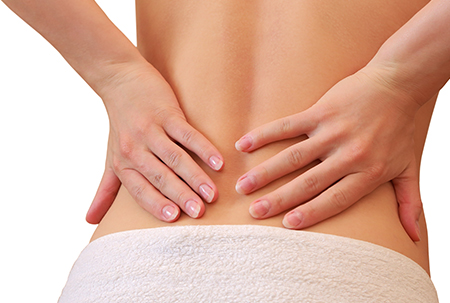
Dvectis supports healthy development of children.
Spine development begins with the birth and lasts thoughtout the whole growth period of the human body.
read more- Not paying attention to spine development during the early stages of human lives, childhood, we expose our kids to higher chances of negative functional and structural changes that might not be reversed once the adulthood is reached. In terms of movement and development of the spine, preschool age can be seen as a favorable period. Unfortunately, during this time period, children start spending significant time sitting while at school, when doing homework, or sitting in front of the computers, TV screens and other gadgets that starts driving our sedentary lifestyles.
- Let's take a look at numbers. The average number of first graders in small country of Slovakia is more than 53,000 children. Already at the age of 7, more than 5,300 children (10%) are diagnosed with scoliosis, abnormal posture, or other various deformities. Years pass, and at age of 18, the percentage rises from 10% to 40%, which means that at the age of 18, more than 21,000 young people suffer from spine conditions. As a results, surgeons have been registering unprecedented workload. The average number exceeds 5,000 surgeries in a single year. We can’t overlook that new patients for neurosurgical clinics are now being recruited already at elementary schools levels.
- Let’s have our children sit properly and healther with Dvectis and help prevent these negateive effects. Let’s teach our children sit upright and appreciate their health. Dvectis activated dynamic sitting helps children with back and spine pain prevention while having fun at the same time.

Strengthens core muscles.
Active or dynamic sitting reduce the negative effects of sedentary lifestyle, such as functional disorders of the musculoskeletal system (scoliosis – curvature of the spine), structural changes in the spine and joints, or damage to the intervertebral discs.
Strengthens back muscles and promotes blood circulation throughout the body.
read moreActive or dynamic sitting reduce the negative effects of sedentary lifestyle, such as functional disorders of the musculoskeletal system (scoliosis – curvature of the spine), structural changes in the spine and joints, or damage to the intervertebral discs. Dynamic Directional™ sitting is a form of exercise, which is designed to strengthen back and core muscles and stimulate proper spine alignment and postural health. Increased blood circulation reduces chances of cardiovascular diseases and provides better blood supply to tissues and organs which has a general positive effect on the body’s cells and overall fitness of the body.
Slacked back muscles are stimulated and strengthened.
read moreThrough stabilization efforts, meaning by a constantly changing position of the pelvis, Dvectis strengthens the muscles in the core area and back. Muscle receptors, tendons, and proprioceptors in joints are triggered to respond to the changing positions. These receptors send signals to the brain, where muscle work is regulated, and proper functioning of muscle chains is achieved and thus helps adjust incorrect stereotyped movements.
It only takes a few minutes a day sitting on Dvectis to feel increased muscle strength.
read moreAt the beginning (the first few weeks), sit on the slightly inflated Dvectis for 5 to 10 minutes and repeat 10 to 15 times a day. Allow 5 to 10 minutes breaks in between the sets. Gradually increase the time limits as your comfort level allows. As the deep core muscles get progressively stronger, you should feel more comfortable to sit on Dvectis for a longer period of time.
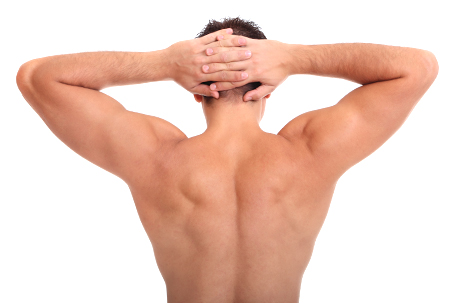
Long-term improvement of body posture.
Supports upright body posture and natural spine curvature.
read moreThanks to gravity, our body relaxes and the pressure on the intervertebral discs distributes. When transferring body weight from the core forward to the lower extremities (when writing, working with PC, etc.), the back end of air membrane/s elevates and the pad prompts to adjust the pelvis area into a correct position for upright posture in the lumbar section.
Promotes back pain and stiffness relief caused by improper sitting.
read moreIf we sit in an unstable position, we are forced to maintain a balance. This is promt by our autochthonous deep muscles of the spine. Their activity is increased thanks to constant stimuli coming from the unstable surface.
Reduces the tendency to slouch when sitting.
read moreThe Brügger's relief position is characterized by pitching the pelvis forward, lifting the chest (which prevents arching of the thoracic spine), head positioning, breathing into the stomach, and proper fixation of the blades. The legs and thighs create a 45° angle, with the feet flat on the ground and slightly rotated outwards. Such sitting is ideal if our muscles are not shortened. However, any long-lasting static sitting position can cause fatigue and unfavorable isometric activity of the postural muscles. Sitting on dynamic-directional pad changes the tradition rigid sitting to dynamic-directional form of exercise designed to stimulate proper spine alignment, muscle strength and upright postural health.
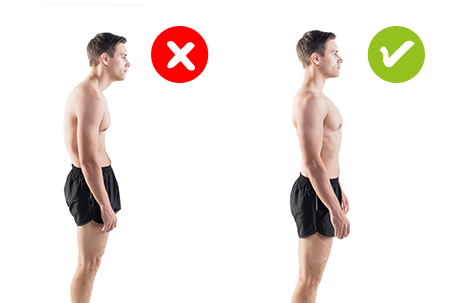
Strengthens and shapes your body.
Dvectis promotes muscle activity and increases calories consumption.
read moreDvectis activated Dynamic Directional™ form of exercise helps increase burning of calories and promotes muscles tone and definition. The buttocks and thighs are one of the most problematic parts of the human body. Sitting on Dvectis leads to better blood circulation and activation of the lymphatic system in these problematic areas.
Strengthens muscles and forms your body and posture.
read moreDvectis creates unstable regulated surface that initiates physical activity. If we sit in an unstable position, we are forced to maintain a balance. This is promt by our autochthonous deep muscles of the spine. Their activity is increased thanks to constant stimuli coming from the unstable surface. Thanks to gravity, our body relaxes and the pressure on the intervertebral discs distributes. When transferring body weight from the core forward to the lower extremities (when writing, working with PC, etc.), the back end of air membrane/s elevates and the pad prompts to adjust the pelvis area into a correct position for upright posture in the lumbar section.
Massages and promotes blood circulation in the pelvic region to help reduce cellulite.
read moreCellulite is an aesthetic problem of the skin, particularly in the buttocks and thighs areas. In cellulite, the volume of the subcutaneous fat cells is increased. The fat cells are pushed against the skin and create dimpled and lumpy appearance. Among other things, long sitting is a great risk factor for cellulite formation. In static sitting, there is only minimal blood circulation in the gluteal muscles while the flow of lymph is significantly reduced as well. Dynamic Directional™ activated sitting on Dvectis pad promotes gluteal muscle activity that leads to better blood circulation and activation of the lymphatic system in these problematic areas.
